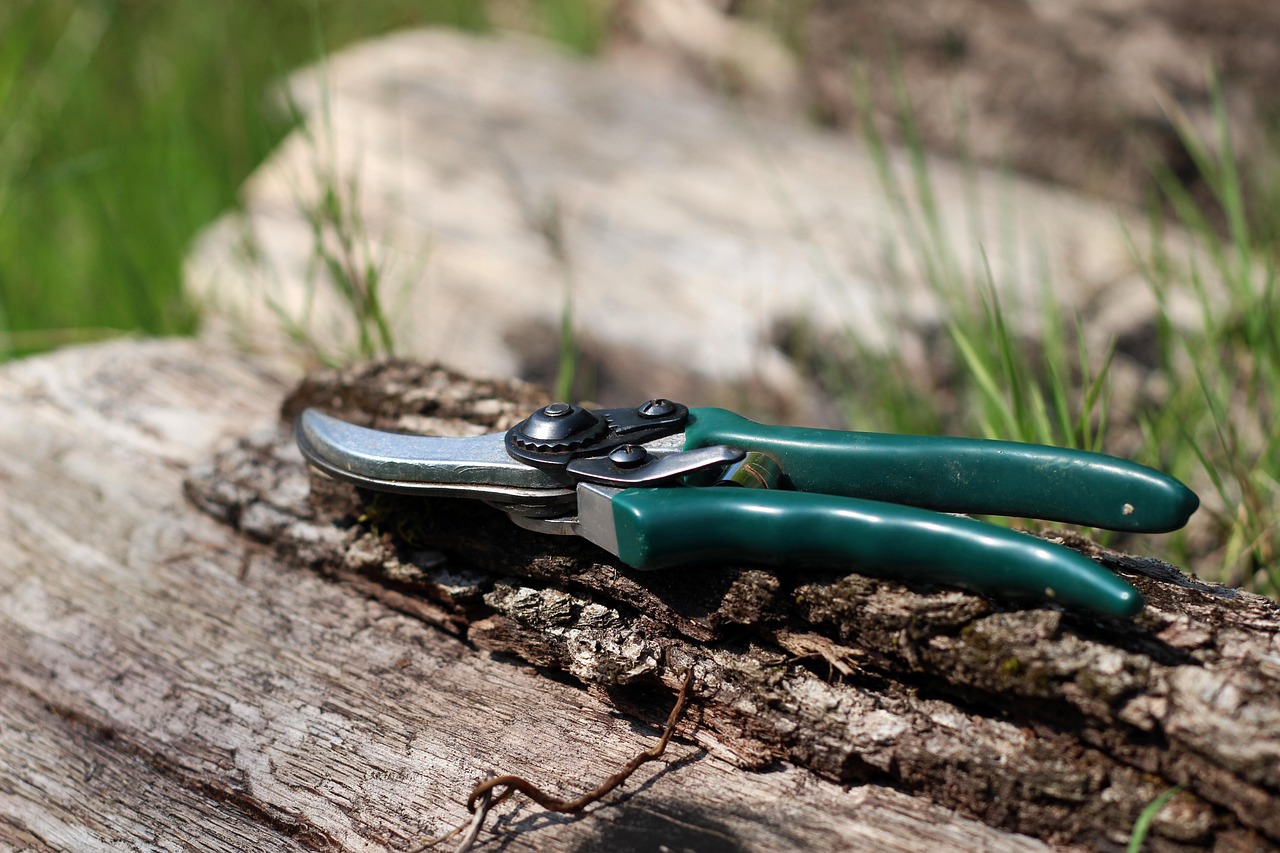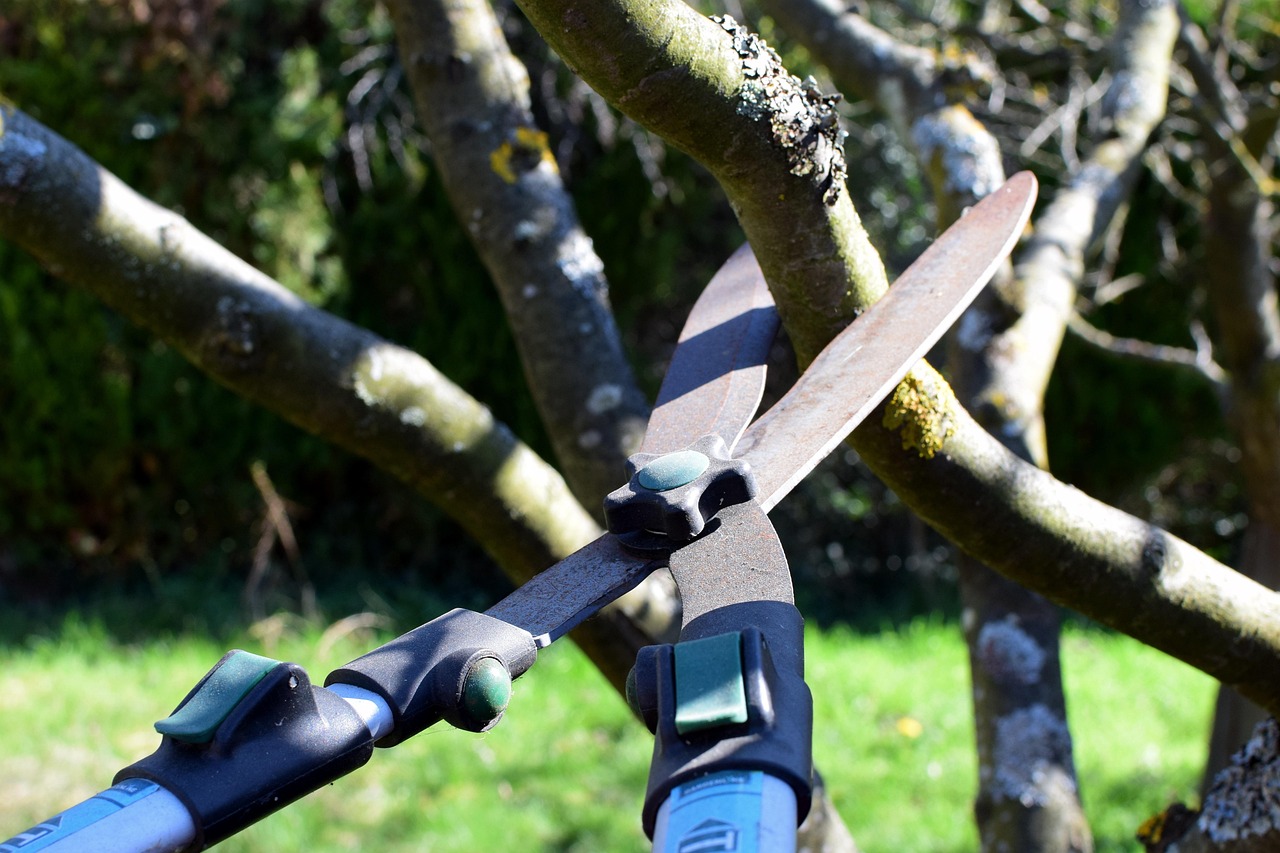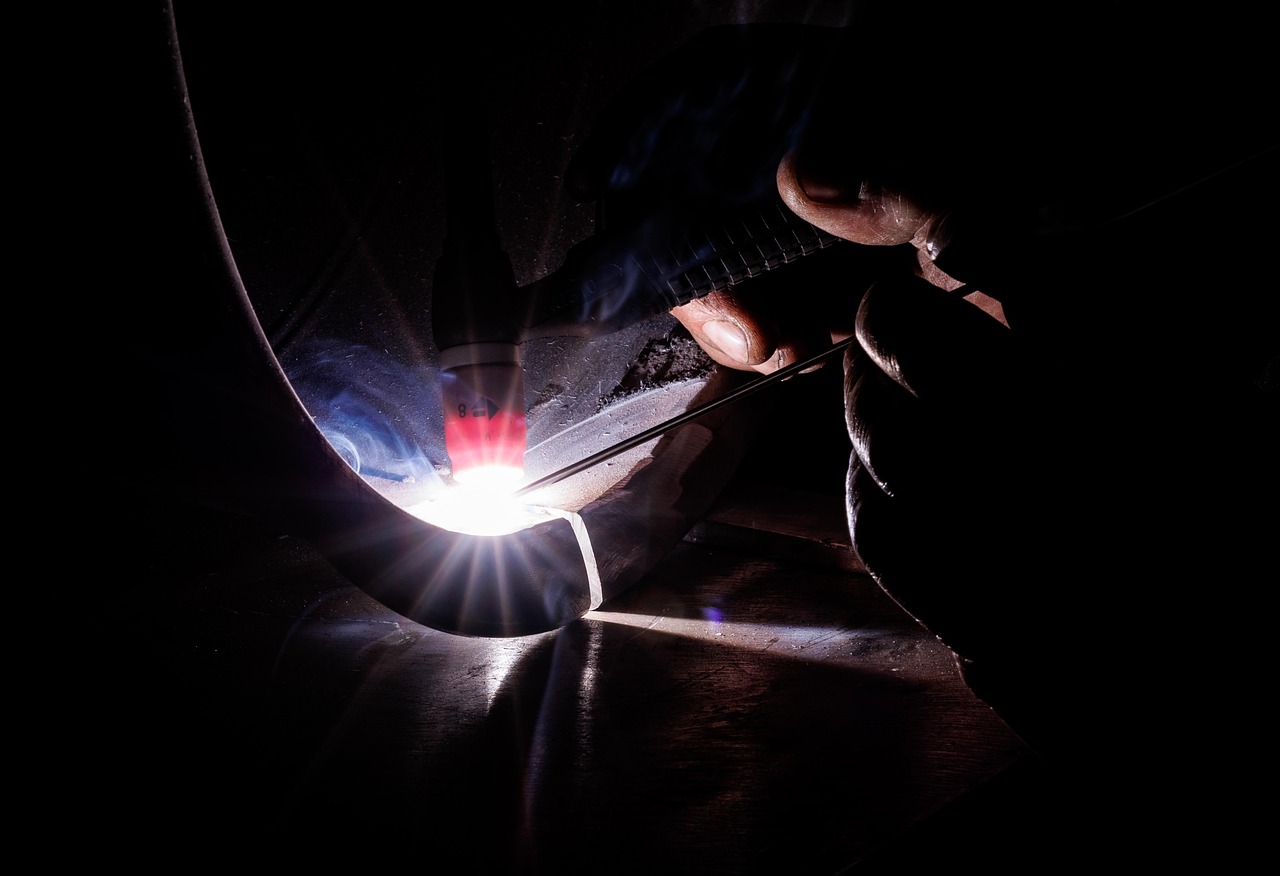Essential pruning for hobbyist and weekend gardeners involves cutting back plants to promote healthy growth, enhance fruit production, and maintain a tidy appearance. Understanding the right techniques and timing is crucial for successful pruning.
Pruning is a fundamental practice in gardening that helps maintain the health and appearance of plants. For hobbyists and weekend gardeners, effective pruning can lead to more vigorous growth, increased flowering, and improved fruit yields. It’s a skill that may seem daunting at first, but with practice, anyone can learn to prune effectively.

There are many reasons to prune plants. One of the main purposes is to remove dead or diseased branches, which can prevent the spread of pests and diseases. Additionally, pruning helps shape plants, allowing them to grow in a more aesthetically pleasing way. It can also increase air circulation and light penetration, which are vital for plant health.
Understanding Pruning Basics
Before diving into the specifics of pruning techniques, it is essential to understand some basic principles. These principles will help guide your pruning efforts regardless of the type of plants you are working with.
- Timing: The best time to prune varies by plant type. Generally, late winter or early spring is ideal for most deciduous plants. However, some flowering shrubs benefit from summer pruning.
- Tools: Having the right tools makes pruning easier and more effective. Essential tools include pruning shears, loppers, and a pruning saw.
- Technique: Proper cutting techniques are critical. Always make cuts at a slight angle and just above a bud or branch junction.
As a gardener, it’s important to know what types of plants you are pruning. Different species have unique growth habits and requirements. Below is a table summarizing common categories of plants and their recommended pruning times.

| Plant Type | Best Time to Prune | Pruning Goals |
|---|---|---|
| Deciduous Trees | Late Winter/Early Spring | Shape tree, remove dead branches |
| Flowering Shrubs | After Blooming (Spring/Summer) | Encourage new growth, maintain size |
| Fruit Trees | Late Winter | Increase fruit production, shape tree |
| Perennials | Early Spring/Fall | Remove dead growth, promote new blooms |
Properly timing your pruning can significantly affect the health of your plants. For example, if you prune spring-flowering shrubs in the fall, you may be cutting off buds that would produce beautiful flowers in the spring. Understanding each plant’s growing cycle will help you make informed decisions about when to prune.
The Right Tools for Pruning
Using the right tools is essential for successful pruning. Here are some common tools that every gardener should consider having in their gardening kit:
- Pruning Shears: Ideal for cutting small branches and stems. They come in various sizes, so choose one that feels comfortable in your hand.
- Loppers: Useful for reaching higher branches or thicker stems that are too large for shears.
- Pruning Saw: Best for cutting larger branches that cannot be handled by shears or loppers.
- Gloves: Protect your hands from thorns and sharp edges while working with plants.
Before using your tools, ensure they are clean and sharp. Dull tools can damage plants and make the pruning process more labor-intensive. Regular maintenance of your tools will improve their performance and lifespan.

As you embark on your gardening journey, remember that practice makes perfect. Over time, you will develop an understanding of how to prune different plants effectively. With patience and attention to detail, you will see your garden flourish in response to your efforts.
Pruning Techniques for Different Plants
Each type of plant has its unique characteristics and requirements when it comes to pruning. Understanding these differences will help you apply the correct techniques to achieve the best results. Below, we explore specific pruning techniques for various common plants.
Pruning Trees
Pruning trees is essential for maintaining their health and shape. Here are some techniques to consider:

- Thinning: This involves removing selected branches to improve air circulation and light penetration. It helps prevent disease and encourages healthy growth.
- Reduction: This technique reduces the size of a tree while maintaining its natural shape. It’s often used on large trees that may become too dominant in a landscape.
- Deadwooding: Removing dead, damaged, or diseased branches is crucial for tree health. This practice not only improves aesthetics but also prevents pests from taking hold.
Pruning Shrubs
Shrubs can enhance your garden’s beauty, but they require regular pruning to maintain their shape and promote healthy growth. Here are some tips:
- Shearing: This technique involves cutting back foliage evenly, creating a formal shape. It is ideal for hedges and ornamental shrubs.
- Rejuvenation: For overgrown shrubs, you can cut them back significantly to encourage new growth from the base. This is typically done in early spring.
- Selective Pruning: Focus on removing older stems to promote new growth. This technique helps maintain a natural appearance while encouraging flowering.
Pruning Perennials
Perennials benefit from pruning to remove old growth and promote new blooms. Consider the following techniques:
- Cutting Back: After flowering, cut the stems back to encourage new growth and prevent disease buildup.
- Dividing: Every few years, divide perennials to promote healthy growth and rejuvenation. This can also help control their spread.
- Pinching: Pinch back the tips of stems during the growing season to promote bushier growth and more flowers.
Common Mistakes in Pruning
Even experienced gardeners can make mistakes while pruning. Here are some common pitfalls to avoid:
- Pruning at the Wrong Time: Pruning at the wrong time can damage plants. Always research the best time for specific plants.
- Over-Pruning: Removing too much foliage can stress plants and inhibit growth. Always assess how much is necessary before making cuts.
- Poor Cuts: Making cuts too close to the trunk or leaving stubs can harm plants. Aim for clean cuts just above a bud or branch joint.
The Importance of Aftercare
After pruning, proper care is crucial for plant recovery. Here are some aftercare tips:
- Watering: Ensure that pruned plants receive adequate water, especially during dry spells. This helps them recover from the stress of pruning.
- Fertilizing: Applying a balanced fertilizer after pruning can boost new growth. However, avoid heavy fertilization immediately after cutting.
- Pest Monitoring: Keep an eye on plants for signs of pests or diseases after pruning. Early detection can prevent further damage.
Pruning for Aesthetic Appeal
Aesthetic pruning can transform your garden into a visual masterpiece. Here are some tips for achieving an attractive garden layout:
- Create Focal Points: Use pruning to highlight certain plants or features in your garden. Shape trees or shrubs to draw attention.
- Maintain Balance: Ensure that plants are proportionate in size and shape for a harmonious look. Regularly assess and adjust as needed.
- Add Layers: Prune plants at different heights to create depth and character in your garden. Taller plants can frame shorter ones, enhancing overall appeal.
Implementing these techniques will enhance not only the health but also the beauty of your garden. With careful planning and execution, you can create a stunning landscape that reflects your gardening style and passion.
Seasonal Pruning Considerations
Understanding the seasonal aspects of pruning is key to maximizing plant health and aesthetics. Different plants respond uniquely to pruning at various times of the year. Below, we explore how to approach seasonal pruning effectively.
Spring Pruning
Spring is often considered the prime time for pruning many plants. As new growth begins, it is essential to prepare plants for the upcoming growing season. Here are some considerations:
- Deciduous Trees: Spring is an excellent time to prune deciduous trees before they leaf out. This allows you to see the structure clearly and make informed cuts.
- Flowering Shrubs: For shrubs that bloom on old wood, such as lilacs, it’s best to prune them immediately after flowering to avoid removing next year’s blooms.
- New Growth: Focus on removing any dead or damaged branches and shaping young plants to encourage a strong structure.
Summer Pruning
Summer pruning can be beneficial for controlling the size and shape of plants while encouraging bushier growth. Consider the following:
- Light Pruning: Trim back excessive growth on shrubs and perennials to maintain shape and encourage lateral branching.
- Deadheading: Removing spent flowers from annuals and perennials encourages more blooms throughout the season.
- Thinning: Thin out crowded areas in trees and shrubs to improve air circulation and sunlight penetration, reducing disease risk.
Fall Pruning
Pruning in the fall is generally discouraged for many plants, but some specific practices can be beneficial:
- Cleaning Up: Remove any dead or diseased plant material to prevent pests from overwintering in your garden.
- Selective Cuts: Lightly prune evergreen trees and shrubs to maintain shape without stimulating new growth that could be damaged by frost.
- Preparing for Winter: Prune certain perennials back to their crowns to prepare them for winter dormancy.
Winter Pruning
Winter is often regarded as a good time for major pruning tasks since many plants are dormant. Here are the benefits of winter pruning:
- Visibility: With leaves gone, it’s easier to see the structure of trees and shrubs, allowing for more precise cuts.
- Encouraging Growth: Pruning in winter can help stimulate early spring growth as plants wake from dormancy.
- Reduction of Pests: Many pests and diseases are less active in winter, making it a safer time to prune without risking infection.
Understanding Plant Responses to Pruning
Plants respond differently to pruning based on their species, age, and overall health. Recognizing these responses can enhance your pruning strategy:
Growth Patterns
Different plant species exhibit various growth patterns. Here are some examples:
- Cylinder Growth: Some trees grow in a cylindrical manner, where branches grow straight up. These trees often require less pruning than spreading varieties.
- Bushy Growth: Shrubs with bushy growth patterns may need more frequent pruning to maintain their shape and promote airflow.
- <strong=Weeping Growth: Weeping trees require careful pruning to maintain their unique form without disrupting their natural beauty.
Aging Plants
The age of a plant significantly influences its response to pruning. Here are some considerations:
- Younger Plants: Young plants benefit from formative pruning, which helps establish a strong structure. Focus on removing weak or crossing branches.
- Mature Plants: Older plants may require more substantial pruning. Remove dead or damaged wood and thin out excessive growth for improved health.
- Sick Plants: If a plant shows signs of disease, immediate pruning of affected areas can prevent further spread, enhancing recovery chances.
Tools for Advanced Pruning Techniques
As you become more experienced in pruning, you may want to explore advanced techniques that require specific tools. Here are some tools that can help with specialized pruning methods:
| Tool | Description | Best Use |
|---|---|---|
| Bonsai Shears | Small, precise shears for delicate cuts. | Bonsai tree shaping and maintenance. |
| Pole Pruner | A long-handled tool to reach higher branches. | Pruning tall trees and hard-to-reach areas. |
| Saw Blade Pruner | A pruner with a saw blade attachment for larger branches. | Cuts through thicker branches effectively. |
| Crown Reducer | A specialized tool for reducing the height of taller trees. | Makes clean cuts on larger tree branches without damaging surrounding wood. |
Utilizing the right tools for advanced techniques can improve your efficiency and effectiveness when pruning. Familiarizing yourself with these options will allow you to take your gardening skills to the next level.
Advanced Pruning Techniques
As you become more experienced, you may want to explore advanced pruning techniques that can significantly enhance plant health and aesthetics. These methods often require a deeper understanding of plant biology and growth patterns. Below are some advanced techniques to consider.
Espalier Pruning
Espalier pruning is a technique used to train trees and shrubs to grow flat against a wall or trellis. This method is ideal for small spaces and can create stunning visual displays. Here are the steps involved:
- Select a Suitable Plant: Choose a tree or shrub that can be easily trained, such as apple or pear trees.
- Establish a Framework: Use a trellis or wire system to create a support structure for the plant to adhere to.
- Regularly Prune: Prune back new growth to encourage lateral branching and maintain the desired shape.
Crown Thinning
Crown thinning is the selective removal of branches within the crown of a tree to improve light penetration and air circulation. This technique is beneficial for larger trees that may become dense over time. Key points include:
- Choose the Right Branches: Remove branches that cross each other or are growing inward toward the center.
- Maintain Balance: Ensure that you maintain the overall shape and balance of the tree while thinning.
- Avoid Over-Thinning: Removing too many branches can lead to stress. Aim for 15-20% of the crown at a time.
Pinching and Deadheading
Pinching and deadheading are techniques used primarily on flowering plants. These methods encourage more blooms and fuller growth:
- Pinching: Gently pinch off the tips of growing stems to promote bushier growth. This technique is effective for many annuals and perennials.
- Deadheading: Remove spent flowers from plants to encourage new blooms and prevent seed formation, which can deplete energy from the plant.
Pruning Resources and Tools
To further enhance your pruning skills, consider utilizing available resources and tools. Here are some valuable options:
- Gardening Books: Look for books focused on pruning techniques specific to your region and plant types. These resources can provide in-depth knowledge and tips.
- Online Courses: Various platforms offer online gardening courses that cover pruning techniques, plant care, and landscape design.
- YouTube Tutorials: Many experienced gardeners share their knowledge through video tutorials, providing visual demonstrations of proper pruning techniques.
Final Thoughts
Pruning is an essential skill for hobbyist and weekend gardeners seeking to enhance their gardening experience. By understanding the basics of pruning, utilizing appropriate tools, and applying seasonal considerations, you can significantly improve the health and aesthetics of your plants.
Advanced techniques, such as espalier pruning and crown thinning, can further elevate your gardening skills. Remember that practice makes perfect, and over time, you will develop a keen eye for what each plant needs. Always stay informed about your specific plant varieties, as they require different approaches to thrive.
Embrace the art of pruning, not just as a chore but as an opportunity to connect with your garden. With patience and dedication, your efforts will result in a vibrant, flourishing landscape that brings joy and satisfaction throughout the seasons.
As you continue your gardening journey, take pride in your ability to shape your plants into thriving specimens that reflect both your personal style and love for nature. Happy gardening!
